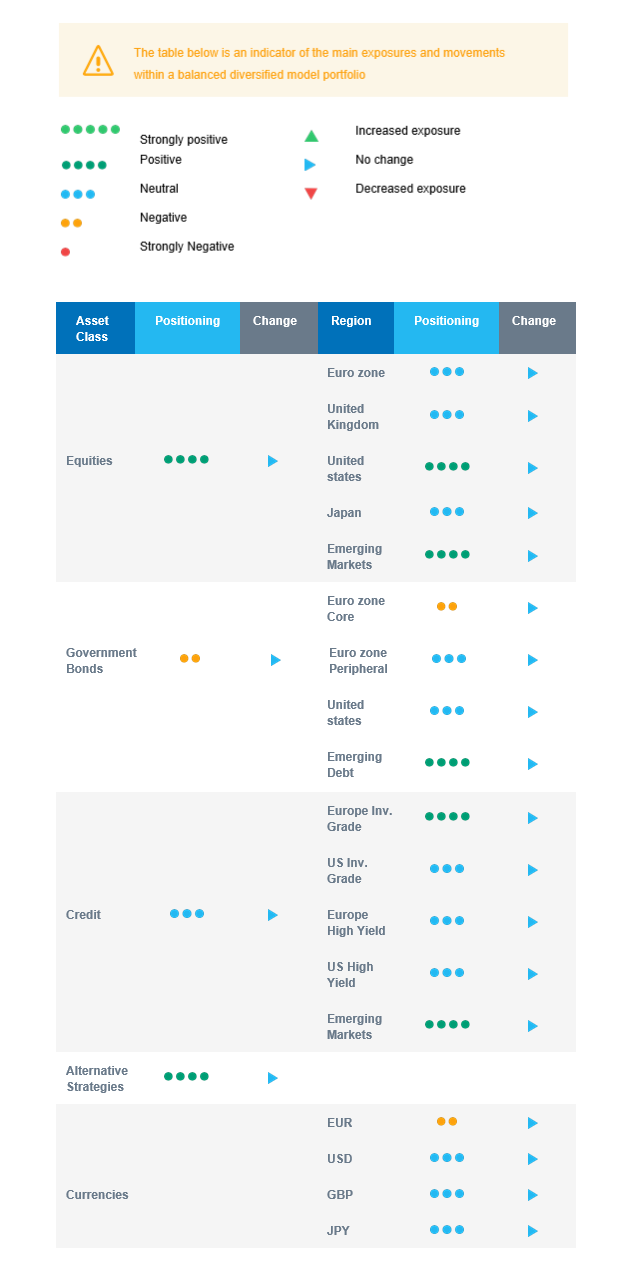Last week in a nutshell
- After three years of pandemic-era travel restrictions in China, millions of families started celebrating the Lunar New Year.
- The Global flash Composite Purchasing Managers' Index (PMI), climbed to 50.2 this month from 49.3 in December.
- The deflator for US Core Personal Consumption Expenditures for Q4 2022 came out at 3.9%, lower than the market estimate.
- Business activity in the euro zone made a return to modest growth and started the year with cautious optimism on avoiding a recession.
What’s next?
- The US Federal Reserve, the European Central Bank, and the Bank of England are meeting for policy decisions. The focus will increasingly turn to the pace of the upcoming hikes.
- In the US, the job report will be published amid the ongoing earnings season. Large caps in the Industrials, Tech, and Materials sectors will publish their Q4 2022 results.
- In the euro zone, the flash Consumer Price Index for January and the GDP growth rate for Q4 2022 will be published giving insight into the resilience of economic growth and decline in inflation.
- China's statistics agency, NBS, will publish its PMIs and will also provide data on factory activity, delivery time, input cost and output charge. This will allow investors to gauge the impact of the reopening.
Investment convictions
Core scenario
- Our current economic scenario encompasses a deceleration in inflation and in economic growth, via a soft landing of the US economy in 2023. By the same token, we do not see a lower market low than the one seen last October.
- Credit is a strong conviction for the start of 2023 since the carry that was reconstituted by the rise in yields in 2022 looks attractive. We are overweight Credit, including Emerging market debt.
- We see equity markets moving within a broad range: limited to the upside by the actions of central banks, which will ensure that financial conditions do not ease too quickly if the economy is holding up well and supported by a faster monetary policy pivot if the economy is too hard hit.
- We expect emerging market to outperform as valuation has become more attractive while Asia keeps superior long-term growth prospects vs. developed markets, given that China’s re-opening is rather quick.
- The likelihood of the euro zone growth being severely hit by the natural gas crisis is lower thanks to warm weather. The labour market and consumption are holding up. Inflationary pressure lessened somewhat. With the re-opening of China, Europe should likely resume its export growth.
- Hence, we have a constructive positioning - i.e., overweight equities - but with a controlled risk budget. We expect emerging markets to outperform.
- In this environment, we expect the positive correlation between equities and bonds to decline and Alternative investments to perform well.
Risks
- Among the upside risks, the Chinese re-opening is good news for the domestic and global growth as long as there is no global inflation spill over via a resurgence of commodity prices in the context of constrained supply.
- Further, unseasonably warm temperatures have recently pushed natural gas prices lower, mitigating the negative impact of the energy crisis.
- Downside risks would be a monetary policy error via over-tightening in the US or in the euro zone.
- Overall, inflation declines and a rise in growth at some point in 2023 is limiting the market downside. But we know that the central banks anti-inflation stance is also capping the upside potential for risky assets.
Cross asset strategy
- Our multi-asset strategy has remained constructive and overweight equities on attractive price levels since October. It is nimble and can be adapted quickly. Further, we currently have few strong regional convictions:
- Neutral euro zone equities, keeping the exposure.
- Neutral UK equities, diversified sector composition and global exposure.
- Overweight US equities, as our soft-landing scenario is unfolding.
- Overweight Emerging markets, as valuation has become attractive and there is still room for a catch-up vs. developed markets.
- Neutral Japanese equities, as accommodative central bank, and cyclical sector exposure usually act as opposite forces for investor attractiveness.
- Positive on sectors, such as healthcare, consumer staples and the less cyclical segments of the technology sector.
- Positive on some commodities, including gold.
- In the fixed income universe, we have a slight short duration positioning via core Europe.
- We continue to diversify into European investment grade credit and source the carry via emerging debt and global high yield debt.
- In our long-term thematics and trends allocation: We favour investment themes linked to the energy transition and keep Technology, Healthcare and Consumer Staples in our long-term convictions. We expect Automation and Robotisation to recover in 2023, and a growing interest in Climate and Circular Economy-linked sectors (such as Industrials and Technology).
- In our currency strategy, we diversify outside the euro zone and are long CAD.
Our Positioning
Our current positioning is overweight equities with a preference for Emerging markets and the US, followed by European markets, where we build an exposure to banks, which should benefit from the absence of a recession and rising short-term interest rates. On the fixed income side, we have a constructive view on credit, including emerging market bonds and high yield. The latter looks attractive with a sufficient buffer for defaults. We keep a slight short portfolio duration via EU core bonds. We remain allocated to commodity currencies via the CAD.

